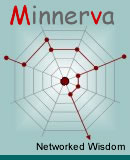

|
This
project provided an update of the trip end, car ownership, and trip
distribution elements of the transport model for Dublin provided by
Minnerva some five years previously. The substantially revised model
was able to exploit significant survey data collected in 2006/7. The
previous model was developed for the Dublin Transport Office, but
organisational changes meant that the revised model was owned by the
Irish National Transport Authority
The surveys provided high samples of Census travel to work and to educational establishments, together with a household travel survey in Dublin that gave information on general travel characteristics. The travel to work and education trip information ensured a sound set of information about a large proportion of trips in the morning peak period. This was a traditional focus of the Dublin model, but the update was required also to provide an off-peak travel model (defined as the period 2 – 3pm) for which much less direct information was available The household travel survey information was used update the existing trip end models for all travel purposes and travel directions (to and from home), except for journeys to work (JTW) and journeys to education (JTE) where the purpose-specific survey data was used directly. This data was also used for calibrating distribution models to generate trip matrices for all cases except JTW and JTW The previous version of the model had relied on matrix estimation procedures using traffic and passenger count data, but there was concern about the scope for distortions. Matrix estimation was therefore still employed to ensure that the trip matrices were consistent with observed network flows, but the procedure paid particular attention to ensuring that zonal trip production rates were consistent with those observed in the household survey. It was a requirement that the structure of the previous demand model was maintained, so the distribution modelling remained a distinct component. For both the distribution and trip end forecast modelling, a significant concern related to the extent of change experienced in the Greater Dublin Area (GDA) and in the towns fringing this area. The modelling approach was essentially incremental in nature, but particular attention was needed for cases where the base year situation was unrepresentative of future year conditions (e.g. large developments on ‘green-field’ sites) Contact: Martin
Bach |

|
|
